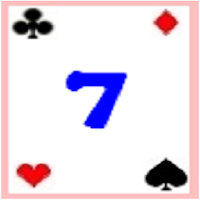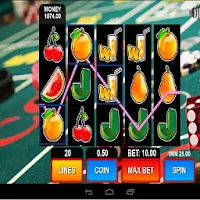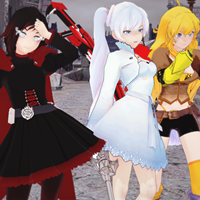 The Legend of Zelda: Echoes of Wisdom marks a groundbreaking moment, being the first Zelda game helmed by a female director. This article delves into the insights shared by Tomomi Sano and the game's unique development journey.
The Legend of Zelda: Echoes of Wisdom marks a groundbreaking moment, being the first Zelda game helmed by a female director. This article delves into the insights shared by Tomomi Sano and the game's unique development journey.
Zelda: Echoes of Wisdom – A Developer Interview Unveils Key Details
Tomomi Sano: The Zelda Series' First Female Director
 Known for its intricate narratives and labyrinthine dungeons, the Legend of Zelda series welcomes a new era with Echoes of Wisdom. Nintendo's recent "Ask the Developer" interview highlighted two pivotal aspects: Princess Zelda's debut as the playable protagonist and Tomomi Sano's groundbreaking role as the first female director.
Known for its intricate narratives and labyrinthine dungeons, the Legend of Zelda series welcomes a new era with Echoes of Wisdom. Nintendo's recent "Ask the Developer" interview highlighted two pivotal aspects: Princess Zelda's debut as the playable protagonist and Tomomi Sano's groundbreaking role as the first female director.
Sano, in her interview, shared her journey. Before assuming the directorial role, she primarily supported directors, contributing to Grezzo's remakes (Ocarina of Time 3D, Majora's Mask 3D, Link's Awakening, and Twilight Princess HD) and the Mario & Luigi series. Her role in Echoes of Wisdom involved production management, suggesting improvements, and ensuring gameplay aligned with Zelda series standards. Series producer Eiji Aonuma noted her consistent involvement in Grezzo's Zelda remakes.
 Image from Nintendo's Ask the Developer Vol. 13 Sano's extensive two-decade career began in 1998 as a Stage Texture editor for Tekken 3. Her Nintendo credits span various titles, including Kururin Squash! and Mario Party 6, and several Mario sports games (Mario Tennis Open, Mario Tennis: Ultra Smash, and Mario Golf: World Tour).
Image from Nintendo's Ask the Developer Vol. 13 Sano's extensive two-decade career began in 1998 as a Stage Texture editor for Tekken 3. Her Nintendo credits span various titles, including Kururin Squash! and Mario Party 6, and several Mario sports games (Mario Tennis Open, Mario Tennis: Ultra Smash, and Mario Golf: World Tour).
Echoes of Wisdom's Genesis: A Zelda Dungeon Maker
 Echoes of Wisdom's origins trace back to the 2019 Link's Awakening remake. Aonuma tasked Grezzo, the co-developers, with shaping the franchise's future using their top-down Zelda expertise. While initially considering another remake, Grezzo proposed a bold concept: a Zelda dungeon maker.
Echoes of Wisdom's origins trace back to the 2019 Link's Awakening remake. Aonuma tasked Grezzo, the co-developers, with shaping the franchise's future using their top-down Zelda expertise. While initially considering another remake, Grezzo proposed a bold concept: a Zelda dungeon maker.
Aonuma's prompt—"What kind of game would you create?"—yielded diverse proposals. The winning concept, while similar to the final game, underwent significant evolution. Early prototypes explored "copy-and-paste" mechanics and a combined top-down/side-view perspective.
Satoshi Terada of Grezzo explained the experimental phase, including an "edit dungeon" concept where players could craft their own Zelda gameplay using copied objects.
 Grezzo dedicated over a year to the dungeon creation mechanic. However, Aonuma's intervention, a "tea table upending," dramatically altered the course. While appreciating the initial ideas, he envisioned greater potential if copied items served as tools within pre-designed adventures rather than for complete dungeon creation.
Grezzo dedicated over a year to the dungeon creation mechanic. However, Aonuma's intervention, a "tea table upending," dramatically altered the course. While appreciating the initial ideas, he envisioned greater potential if copied items served as tools within pre-designed adventures rather than for complete dungeon creation.
Sano illustrated this shift using the Thwomp enemy from Link's Awakening. Its copy-and-paste functionality allowed for creative puzzle solutions, such as using it to crush objects from above or as a climbing platform.
 Initially, concerns arose about potential exploits. However, the team realized these restrictions were unnecessary and removed them. This fostered "mischievous" gameplay, encouraging creative and unconventional solutions. Aonuma emphasized the importance of unexpected interactions, citing the spike rollers as a key example.
Initially, concerns arose about potential exploits. However, the team realized these restrictions were unnecessary and removed them. This fostered "mischievous" gameplay, encouraging creative and unconventional solutions. Aonuma emphasized the importance of unexpected interactions, citing the spike rollers as a key example.
A document outlining "mischief" guided development, emphasizing three core principles: flexible item placement, puzzle solutions using absent elements, and ingenious uses of copied items that feel almost like "cheating."
 This emphasis on freedom and creativity echoes previous Zelda titles. Aonuma compared this to the Myahm Agana Shrine in Breath of the Wild, where players could cleverly bypass obstacles.
This emphasis on freedom and creativity echoes previous Zelda titles. Aonuma compared this to the Myahm Agana Shrine in Breath of the Wild, where players could cleverly bypass obstacles.
 Launching September 26th on Nintendo Switch, The Legend of Zelda: Echoes of Wisdom presents an alternate timeline where Zelda rescues Hyrule from rifts tearing across the land.
Launching September 26th on Nintendo Switch, The Legend of Zelda: Echoes of Wisdom presents an alternate timeline where Zelda rescues Hyrule from rifts tearing across the land.






